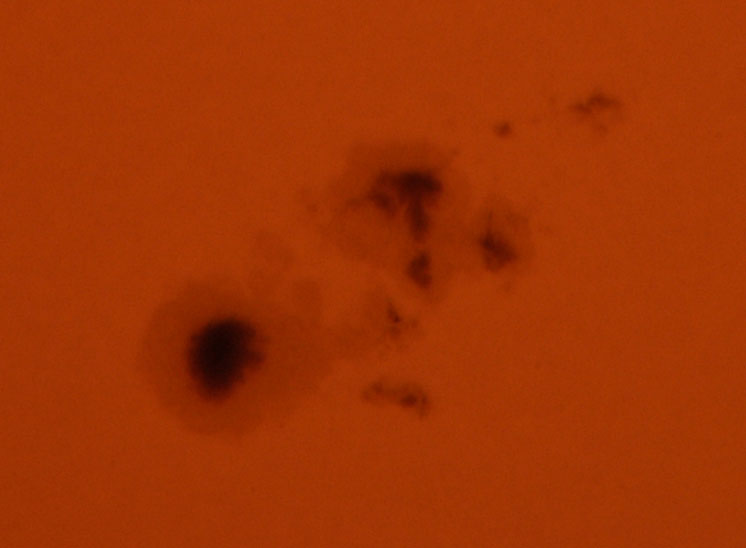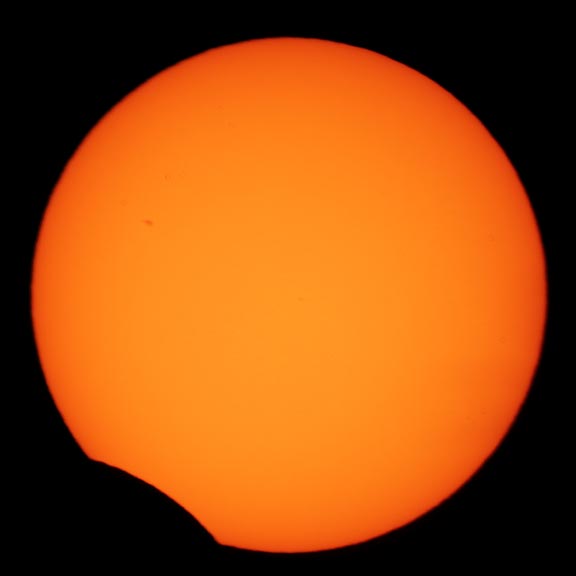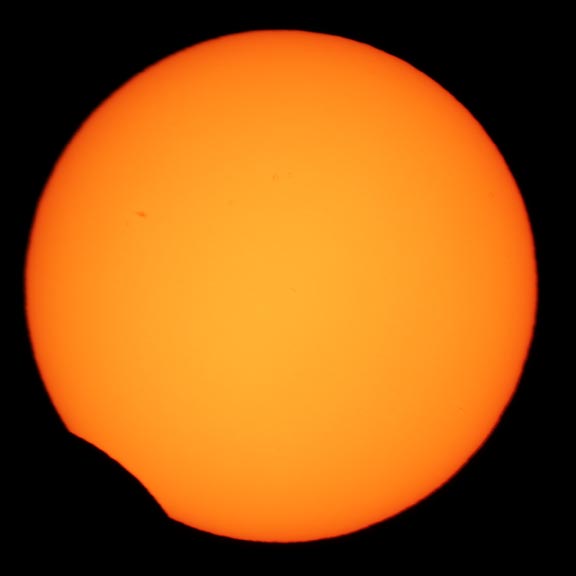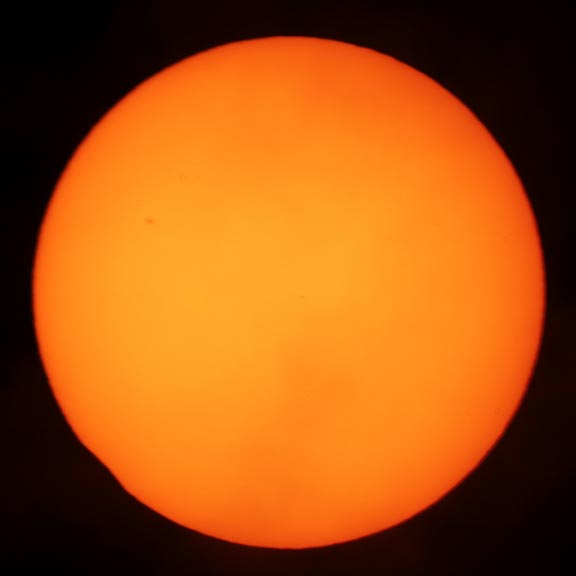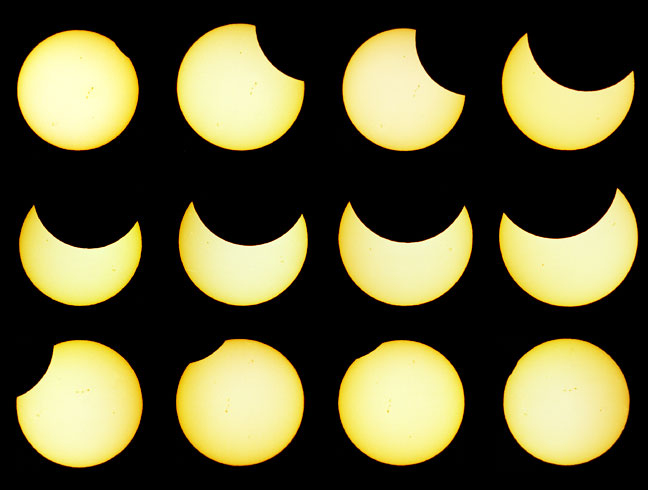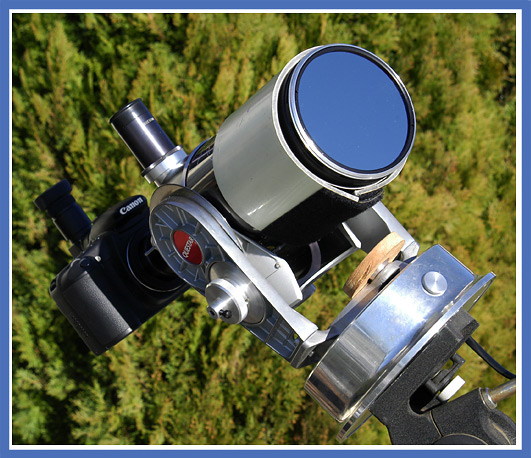 |
A Very Large Sunspot Group on January 12, 2005 |
Sunspots are areas
where sub-surface
magnetic disturbances have caused a slight cooling, and therefore,
a darkening, of the photosphere, which is the visible
surface of the sun. Since the sun is a ball of gas, it doesn't
have an absolutely defined solid surface like the Earth and the
other rocky planets. Galileo
is believed to be the first to discover sunspots, in 1612.
His drawings of sunspots may be seen
here in animated form. Galileo was an astute observer, so it
is no coincidence that his sunspot drawings are so similar to my
photographs. Galileo really upset the applecart because the doctrine
of the Church of Rome was that all heavenly bodies were perfect
and without blemishes. Galileo’s best (or worst from the Church’s
point of view) attack on the applecart was his revolutionary discovery
that there are moons
in orbit around Jupiter. That meant that the Earth
is not the center of the Universe as Church doctrine insisted
that it was. Galileo’sreward for this monumental discovery was
years of house arrest and finally being forced to repudiate
what he knew to be true. But the truth will be supressed, and
in 1992, 350
years after Galileo’s death,
the Church of Rome apologized for condemning Galileo and his scientific
research |
 |
Nine days later, on January 21, 2005, the Sunspot Group shown in the top image had rotated nearly out of sight. It’s that dark spot on the extreme right limb (edge) of the Sun. |
The Sun rotates
on its axis as does the Earth, but with an important difference.
Since, as noted above, the Sun is not a solid body, different latitudes
can rotate at different rates. The solar equator rotates once every
26 days. At 60° north and south of the equator the rotation
requires about 31 days, and at the poles the Sun rotates once every
36 days. If the Earth rotated in this manner and the period of
rotation (the length of the day) was 24 hours at the Equator, the
day would be about 29 hours long in Helsinki, Finland, and 36 hours
long at the North and South Poles. And you think you have problems
with time zones now! |

